Chrysanthemum
How to submit an article:
- Registered users can submit any published journal article that has a unique DOI (Digital Object Identifier) name or link to Research Hub.
- For example, you can paste the full DOI link:
https://doi.org/10.1109/5.771073or just the DOI name:10.1109/5.771073into the field above and click submit. - The person who is first to submit a valid article to Research Hub will forever be credited for it, and every article submission earns you +6 Research Points.
Also known as: Chrysanthemum Morifolium, Ju Hua
Related Topics
Published research studies are articles that present the findings of original research that has undergone a peer-review process and has been made publicly available in scholarly journals, books or other media.
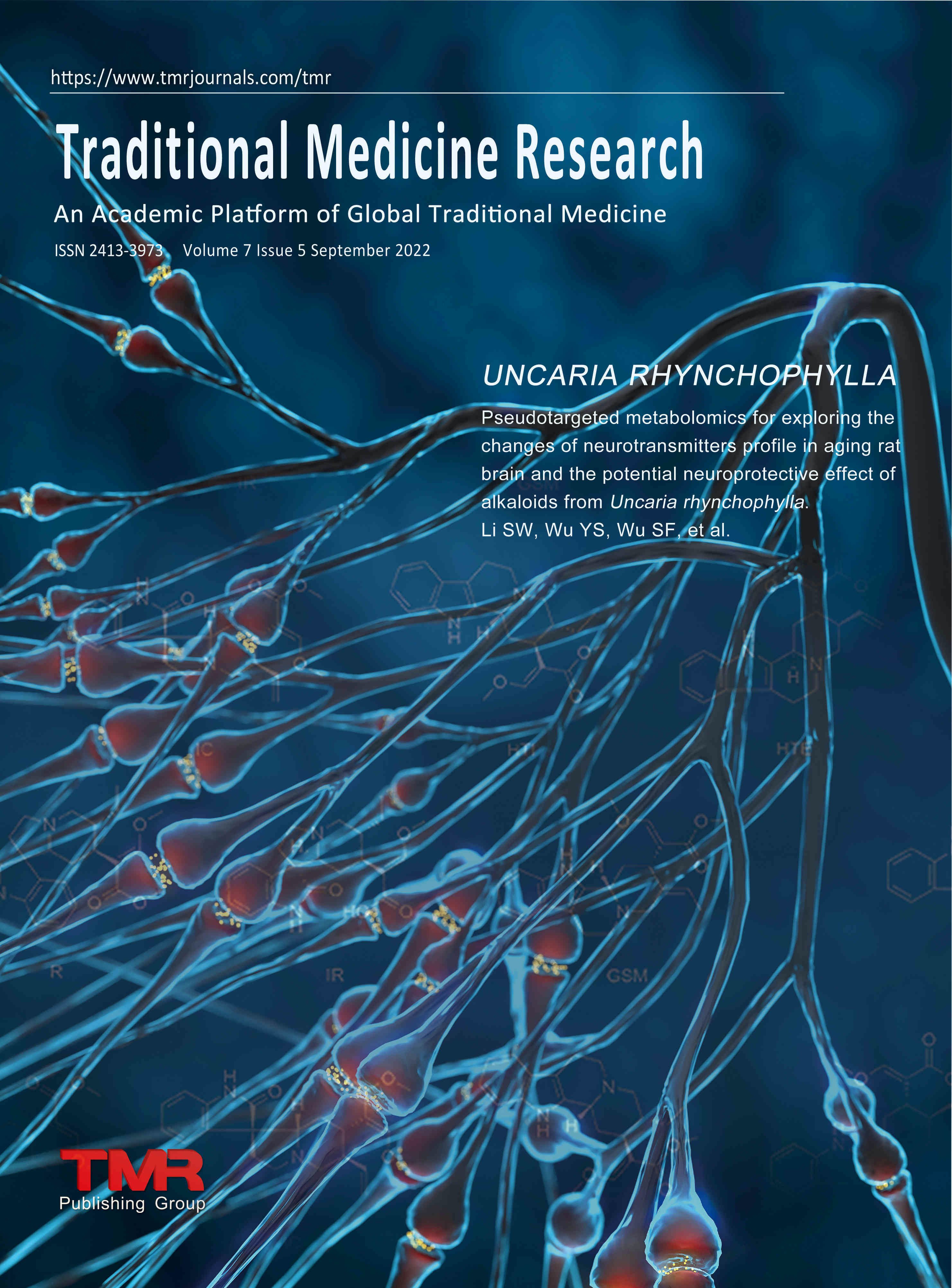
Exploring a novel traditional Chinese medicine prescription containing Chrysanthemi Flos for retinal diseases: an integrated strategy of data mining and network pharmacology
2024 Jan Traditional Medicine Research Zhang JX, Zhang KL, Chang XW, Gu JF, Wei SB, Zhu BY, et al.
Data Mining Network Pharmacology Chrysanthemum Retinitis PigmentosaThe traditional Chinese medicine prescription combination of Chrysanthemi Flos, Cassiae Semen, Lycii Fructus, Angelicae Sinensis Radix and Salviae Miltiorrhizae Radix et Rhizoma presents potential for treating retinal diseases.
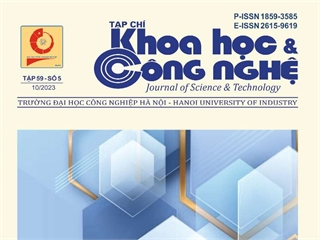
Investigate the antioxidant and anti-osteoporosis activities of compounds isolated from chrysanthemum indicum flowers
2023 Nov 30 Journal of Science and Technology - HaUI Le The Hoai, Nguyen Thi Huong, Bui Thi Thu Trang
Experimental Study Animal StudyThe compound (Z)-5’-Hydroxyjasmone 5’-O-β-D-Glucopyranoside from chrysanthemum flowers demonstrated superior antioxidant and anti-osteoporosis effects.

Effects and mechanism of action of Chrysanthemum morifolium (Jinsi Huangju) on hyperlipidemia and non-alcoholic fatty liver disease
2023 Jul European Journal of Medicinal Chemistry Li X, Li R, Wang X, Zhang X, Xiao Z, Wang H, et al.
Animal Study Cholesterol NAFLD Non-Alcoholic Fatty Liver DiseaseJin Si Huang Ju tea, a traditional Chinese beverage, contains compounds that potentially reduce lipids, mitigate insulin resistance and reduce liver inflammation in vitro.
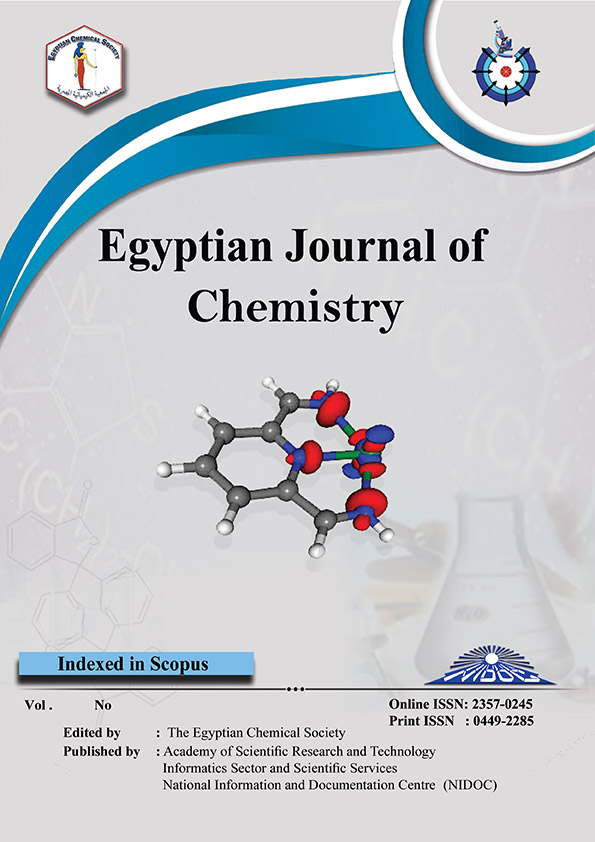
Chemical Investigation of Phenolic Profiles and Antioxidant Activity of Chrysanthemum morifolium
2023 Feb 15 Egyptian Journal of Chemistry Youssef H, Ali S, Sanad M, Dawood D
Experimental Study ChrysanthemumChrysanthemum morifolium contains natural bioactive compounds, including 29 types of phenolics, which display significant antioxidant activity.

A network pharmacology-based investigation of the mechanism of action of chrysanthemum in treating dry eye
2023 Jan TMR Pharmacology Research Cao LY, Long Q, Jiang PF, Peng J, Peng QH
Network Pharmacology Chrysanthemum Dry EyeChrysanthemum has several active ingredients that can potentially treat dry eye by inhibiting inflammation-related factors and pathways, thus reducing inflammation of lacrimal gland tissue.
Research insights are moderated by the Research Hub team and offer an at-a-glance overview of interesting research findings.

2024 Traditional Medicine Research
The traditional Chinese medicine prescription combination of Chrysanthemi Flos, Cassiae Semen, Lycii Fructus, Angelicae Sinensis Radix and Salviae Miltiorrhizae Radix et Rhizoma presents potential for treating retinal diseases.
Data Mining Retinitis Pigmentosa
Exploring a novel traditional Chinese medicine prescription containing Chrysanthemi Flos for retinal diseases: an integrated strategy of data mining and network pharmacology
Zhang JX, Zhang KL, Chang XW, Gu JF, Wei SB, Zhu BY, et al.

2023 Journal of Science and Technology - HaUI
The compound (Z)-5’-Hydroxyjasmone 5’-O-β-D-Glucopyranoside from chrysanthemum flowers demonstrated superior antioxidant and anti-osteoporosis effects.
Experimental Study
Investigate the antioxidant and anti-osteoporosis activities of compounds isolated from chrysanthemum indicum flowers
Le The Hoai, Nguyen Thi Huong, Bui Thi Thu Trang

2023 European Journal of Medicinal Chemistry
Jin Si Huang Ju tea, a traditional Chinese beverage, contains compounds that potentially reduce lipids, mitigate insulin resistance and reduce liver inflammation in vitro.
Animal Study Cholesterol NAFLD Non-Alcoholic Fatty Liver Disease
Effects and mechanism of action of Chrysanthemum morifolium (Jinsi Huangju) on hyperlipidemia and non-alcoholic fatty liver disease
Li X, Li R, Wang X, Zhang X, Xiao Z, Wang H, et al.

2023 Egyptian Journal of Chemistry
Chrysanthemum morifolium contains natural bioactive compounds, including 29 types of phenolics, which display significant antioxidant activity.
Experimental Study
Chemical Investigation of Phenolic Profiles and Antioxidant Activity of Chrysanthemum morifolium
Youssef H, Ali S, Sanad M, Dawood D

2023 Molecules
Chrysanthemum extract can be utilised as a natural ingredient to lessen post-meal cholesterol levels and enhance antioxidant status, after eating a high-fat meal.
Clinical Study
Analysis of Chemical Constituents of Chrysanthemum morifolium Extract and Its Effect on Postprandial Lipid Metabolism in Healthy Adults
Chen L, Sun J, Pan Z, Lu Y, Wang Z, Yang L, et al.
Review Articles
Review articles summarise and critically evaluate the current state of research on a specific topic or field by synthesising multiple primary research studies.

Jing Si Herbal Drink as a prospective adjunctive therapy for COVID-19 treatment: Molecular evidence and mechanisms
2022 Mar Pharmacological Research - Modern Chinese Medicine Lu PH, Tseng CW, Lee JL, Lee EY, Lin YP, Lin IH, et al.
Review Article Randomised Controlled Trial Ai Ye Mai Dong Chrysanthemum Jie GengThe Jing Si Herbal Drink, composed of various antiviral, antioxidant and anti-inflammatory herbs, has been confirmed as potentially effective in treating COVID-19 symptoms.

Chrysanthemum morifolium Ramat.: A Medicinal Plant with Diverse Traditional Uses, Bioactive Constituents, and Pharmacological Activities
2022 Jan Reference Series in Phytochemistry Pandey J, Bastola T, Dhakal B, Poudel A, Devkota HP
Review ArticleThe flower of Chrysanthemum morifolium, widespread in Asia, has been discovered as a treatment for diverse diseases, including obesity, heart disease, and cancer, due to its beneficial phytoconstituents.
Chrysanthemum, an ornamental genus with considerable medicinal value: A comprehensive review
2022 Jan South African Journal of Botany Hadizadeh H, Samiei L, Shakeri A
Review Article Anti-Inflammatory Anticancer Nephroprotective Hepatoprotective ChrysanthemumChrysanthemums, popular floricultural crops, not only hold significant ornamental value but also exhibit various therapeutic potentials including antioxidant, antimicrobial, and anticancer activities.
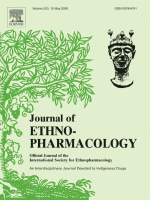
The flower head of Chrysanthemum morifolium Ramat. (Juhua): A paradigm of flowers serving as Chinese dietary herbal medicine
2020 Oct 28 Journal of Ethnopharmacology Yuan H, Jiang S, Liu Y, Daniyal M, Jian Y, Peng C, et al.
Review Article ChrysanthemumJuhua, the flower head of Chrysanthemum morifolium Ramat, possesses multiple medicinal properties and has a significant role in dietary herbal medicine in China.
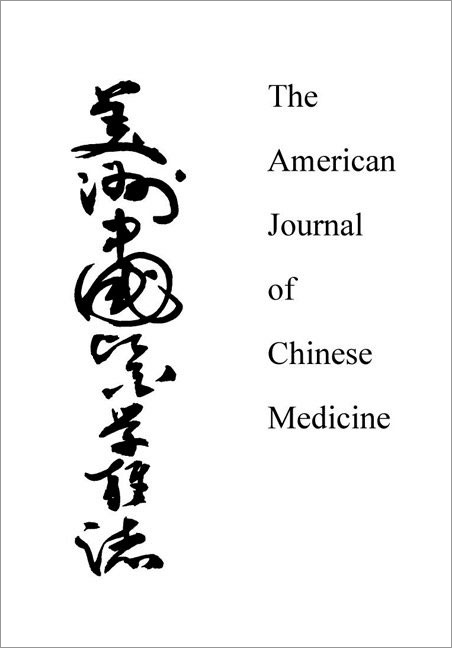
Chrysanthemum indicum L.: A Comprehensive Review of its Botany, Phytochemistry and Pharmacology
2020 Jan The American Journal of Chinese Medicine Shao Y, Sun Y, Li D, Chen Y
Review Article Antioxidant AnticancerThe Chrysanthemum indicum L. plant has been discovered to have multiple pharmacological capabilities including anti-inflammatory, antioxidation, antipathogenic, anticancer, immune regulation, and hepatoprotective effects.
Clinical Trials
Clinical trials are research studies that involve people and are conducted to evaluate the safety and efficacy of new treatments or interventions, such as drugs, medical devices, or behavioural therapies.

Jing Si Herbal Drink as a prospective adjunctive therapy for COVID-19 treatment: Molecular evidence and mechanisms
2022 Mar Pharmacological Research - Modern Chinese Medicine Lu PH, Tseng CW, Lee JL, Lee EY, Lin YP, Lin IH, et al.
Review Article Randomised Controlled Trial Ai Ye Mai Dong Chrysanthemum Jie GengThe Jing Si Herbal Drink, composed of various antiviral, antioxidant and anti-inflammatory herbs, has been confirmed as potentially effective in treating COVID-19 symptoms.

Effects of luteolin-rich chrysanthemum flower extract on purine base absorption and blood uric acid in Japanese subjects
2022 Jan 10 Functional Foods in Health and Disease Takara T, Yamamoto K, Suzuki N, Yamashita S, Iio S, Kakinuma T, et al.
Randomised Controlled Trial LuteolinA daily dose of Chrysanthemum flower extract was found to significantly reduce serum uric acid levels, potentially improving hyperuricemia.
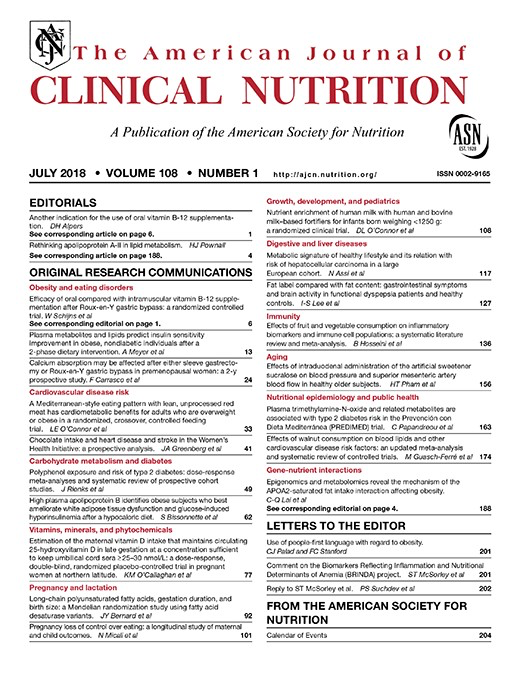
A novel botanical formula improves eye fatigue and dry eye: a randomized, double-blind, placebo-controlled study
2020 Aug The American Journal of Clinical Nutrition Kan J, Wang M, Liu Y, Liu H, Chen L, Zhang X, et al.
Randomised Controlled Trial Blackcurrant Zeaxanthin ChrysanthemumA botanical formula of lutein ester, zeaxanthin, and extracts from blackcurrant, chrysanthemum, and goji berry can effectively lessen eye fatigue and improve macular function.
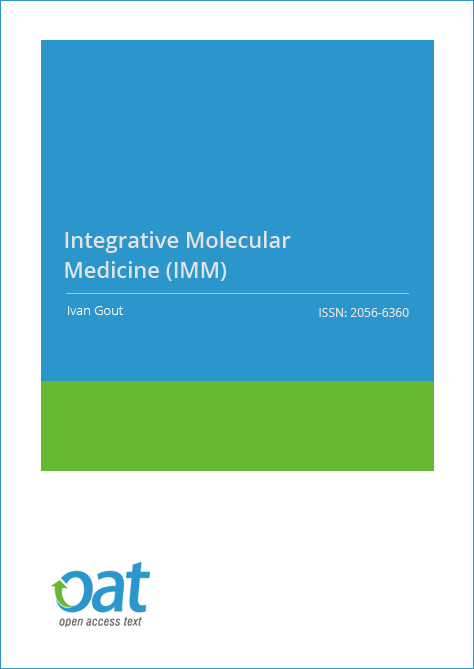
Luteolin-rich chrysanthemum flower extract suppresses baseline serum uric acid in Japanese subjects with mild hyperuricemia
2017 Jan Integrative Molecular Medicine Hirano M, Takeda S, Hitoe S, Shimoda H
Randomised Controlled Trial Gout Uric AcidLuteolin, found in chrysanthemum flower extract, can potentially reduce serum uric acid levels, suggesting it may help prevent gout.

Chrysanthemum flower oil inhibits diet-induced serum uric acid elevation in adult male subjects
2015 Jul 28 Nutrafoods Ueda T, Honda S, Morikawa H, Kitamura S, Iwama Y, Nakagawa K
Randomised Controlled Trial Uric Acid Gout ChrysanthemumChrysanthemum flower oil significantly reduces diet-induced elevation of serum uric acid in Japanese males with high baseline levels.
Study Protocols
Published study protocols are detailed plans that outline the objectives, methodology, statistical analyses, and organisation of a research study that have been made publicly available for others to review and use as a reference.
Presentation Slides

Data Mining
The traditional Chinese medicine prescription combination of Chrysanthemi Flos, Cassiae Semen, Lycii Fructus, Angelicae Sinensis Radix and Salviae Miltiorrhizae Radix et Rhizoma presents potential for treating retinal diseases.
Zhang JX, Zhang KL, Chang XW, Gu JF, Wei SB, Zhu BY, Wang Q, Wu DL, Gui SY, Yan H, Duan JA

Experimental Study
The compound (Z)-5’-Hydroxyjasmone 5’-O-β-D-Glucopyranoside from chrysanthemum flowers demonstrated superior antioxidant and anti-osteoporosis effects.
Le The Hoai, Nguyen Thi Huong, Bui Thi Thu Trang

Animal Study
Jin Si Huang Ju tea, a traditional Chinese beverage, contains compounds that potentially reduce lipids, mitigate insulin resistance and reduce liver inflammation in vitro.
Li X, Li R, Wang X, Zhang X, Xiao Z, Wang H, Sun W, Yang H, Yu P, Hu Q, Guo Q, Sun H

Experimental Study
Chrysanthemum morifolium contains natural bioactive compounds, including 29 types of phenolics, which display significant antioxidant activity.
Youssef H, Ali S, Sanad M, Dawood D

Clinical Study
Chrysanthemum extract can be utilised as a natural ingredient to lessen post-meal cholesterol levels and enhance antioxidant status, after eating a high-fat meal.
Chen L, Sun J, Pan Z, Lu Y, Wang Z, Yang L, Sun G

Network Pharmacology
Chrysanthemum has several active ingredients that can potentially treat dry eye by inhibiting inflammation-related factors and pathways, thus reducing inflammation of lacrimal gland tissue.
Cao LY, Long Q, Jiang PF, Peng J, Peng QH
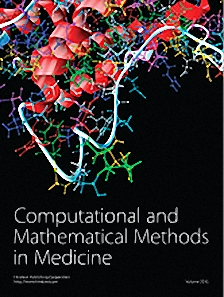
Network Pharmacology
Compound Chrysanthemum extract may alleviate visual fatigue through its interaction with several components, targets, and pathways.
Qiu J, Zheng B, Zhou H, Ye C, Shi M, Shi S, Wu S

Network Pharmacology
Two varieties of chrysanthemum have similar therapeutic effects but operate through distinct mechanisms, revealing potential for precise applications in both traditional and modern medicine.
Wang Y, Li Y, Guo W, Yang X, Qu J, Gao M, Chen S, Dong J, Li Q, Wang T
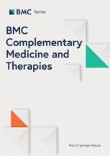
Experimental Study
Chrysanthemum extract has protective effects on light-damaged retinas, reducing oxidative stress and improving cellular viability.
Gong Y, Wang X, Wang Y, Hao P, Wang H, Guo Y, Zhang W

Experimental Study
Ethanol and n-hexane extracts of Chrysanthemum indicum reveal potent anticancer activity against HepG2 cancer cells by promoting apoptosis and reducing cell proliferation.
Mehboob Z, Sharif S, Lodhi MS, Zaigham K

Review Article
The Jing Si Herbal Drink, composed of various antiviral, antioxidant and anti-inflammatory herbs, has been confirmed as potentially effective in treating COVID-19 symptoms.
Lu PH, Tseng CW, Lee JL, Lee EY, Lin YP, Lin IH, Yu MC, Lu KC, Kuo KL

Randomised Controlled Trial
A daily dose of Chrysanthemum flower extract was found to significantly reduce serum uric acid levels, potentially improving hyperuricemia.
Takara T, Yamamoto K, Suzuki N, Yamashita S, Iio S, Kakinuma T, Baba A, Takeda S, Yamada W, Nagata M, Shimoda H

Review Article
The flower of Chrysanthemum morifolium, widespread in Asia, has been discovered as a treatment for diverse diseases, including obesity, heart disease, and cancer, due to its beneficial phytoconstituents.
Pandey J, Bastola T, Dhakal B, Poudel A, Devkota HP

Review Article
Chrysanthemums, popular floricultural crops, not only hold significant ornamental value but also exhibit various therapeutic potentials including antioxidant, antimicrobial, and anticancer activities.
Hadizadeh H, Samiei L, Shakeri A
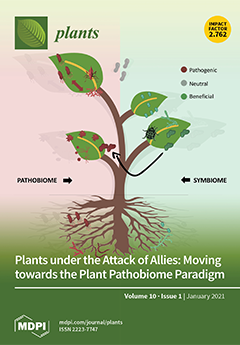
Network Pharmacology
A combination of extracts from chrysanthemum were found to be more effective in treating hyperuricemia and potentially developing anti-hyperuricemic functional foods.
Kim OK, Yun JM, Lee M, Kim D, Lee J
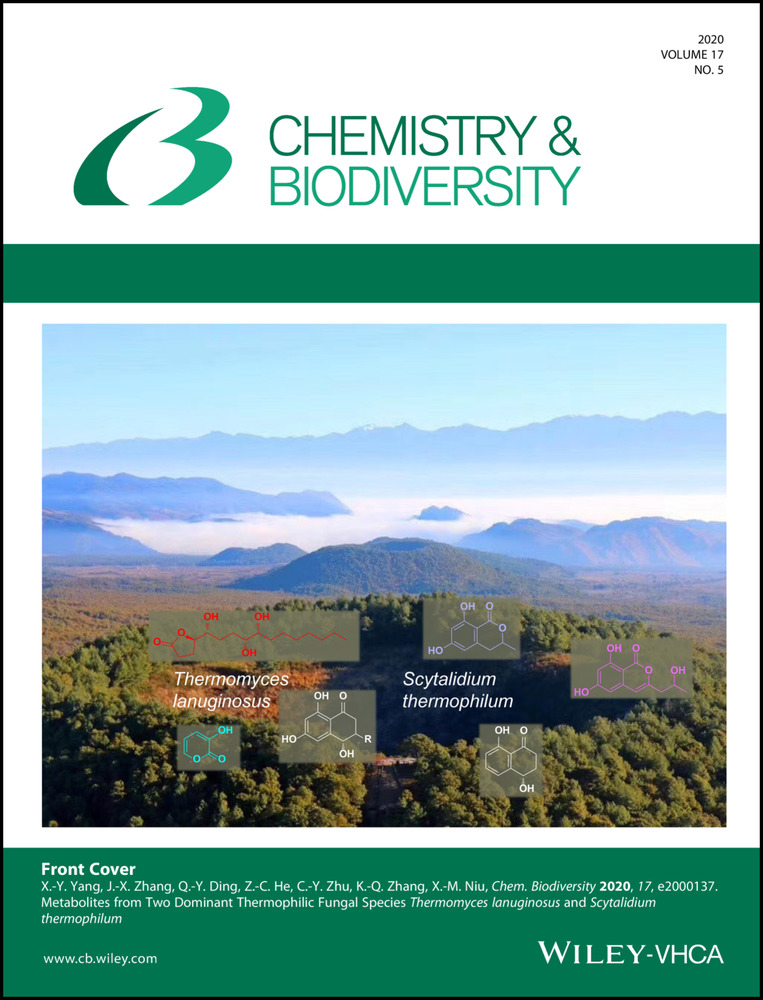
Experimental Study
Chrysanthemum, a traditional Chinese medicine, shows significant antioxidant activity and hepatoprotective effects, making it a potential resource for functional foods and medicinal materials.
Chen L, Liu Y, Huang X, Zhu Y, Li J, Miao Y, Du H, Liu D

Experimental Study
Chrysanthemum coronarium L. extract can both stimulate bone building cells and inhibit bone breaking cells, so has potential as a natural treatment for osteoporosis.
Kim SA, Lee AS, Hur HJ, Lee SH, Sung MJ

Review Article
Juhua, the flower head of Chrysanthemum morifolium Ramat, possesses multiple medicinal properties and has a significant role in dietary herbal medicine in China.
Yuan H, Jiang S, Liu Y, Daniyal M, Jian Y, Peng C, Shen J, Liu S, Wang W

Randomised Controlled Trial
A botanical formula of lutein ester, zeaxanthin, and extracts from blackcurrant, chrysanthemum, and goji berry can effectively lessen eye fatigue and improve macular function.
Kan J, Wang M, Liu Y, Liu H, Chen L, Zhang X, Huang C, Liu BY, Gu Z, Du J

Network Pharmacology
Chrysanthemum morifolium Ramat. ethanol extract (CEE) presents a potential protective effect on lipopolysaccharide induced acute lung injury in mice.
Liu G, Zheng Q, Pan K, Xu X

Experimental Study
Chrysanthemum morifolium, Naringenin and Apigenin can alleviate depression-like behavior by interfering with specific metabolic pathways.
Liu T, Zhou N, Xu R, Cao Y, Zhang Y, Liu Z, Zheng X, Feng W

Review Article
The Chrysanthemum indicum L. plant has been discovered to have multiple pharmacological capabilities including anti-inflammatory, antioxidation, antipathogenic, anticancer, immune regulation, and hepatoprotective effects.
Shao Y, Sun Y, Li D, Chen Y

Review Article
Chrysanthemum, rich in unique chemical compounds, offers significant health benefits such as stress relief, cardio protection, immunity boost, improved eye health, and osteoporosis risk reduction.
SHAHRAJABIAN, M. H., SUN, W., ZANDI, P., CHENG, Q.

Network Pharmacology
The purple chrysanthemum tea, imbued with unique antioxidants and affected by infusion time, showed comparatively higher antioxidant activity than the yellow chrysanthemum.
Han AR, Nam B, Kim BR, Lee KC, Song BS, Kim SH, Kim JB, Jin CH.

Theoretical Article
Chrysanthemum, a plant primarily grown in China and Japan, offers significant health benefits including stress reduction, cardiovascular improvement, and lowering osteoporosis risk.
SHAHRAJABIAN MH

Network Pharmacology
A mixture of Chrysanthemum indicum Linne flower and Cinnamomum cassia significantly mitigates hyperuricemia in rats by inhibiting xanthine oxidase activity and enhancing uric acid excretion.
Lee YS, Son E, Kim SH, Lee YM, Kim OS, Kim DS

Randomised Controlled Trial
Luteolin, found in chrysanthemum flower extract, can potentially reduce serum uric acid levels, suggesting it may help prevent gout.
Hirano M, Takeda S, Hitoe S, Shimoda H
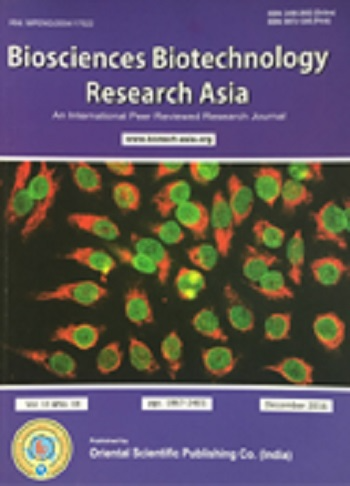
Review Article
The bioactive compounds in Chrysanthemums can be used to develop next generation, multi-functional drugs for various diseases including diabetes and prostate cancer.
Soo Cheon Chae

Experimental Study
The ethanol extract of FCI potentially counters bone loss in mice by enhancing osteoblast proliferation and differentiation, facilitated by multiple bioactive compounds.
Li J, Lin X, Zhang Y, Liu W, Mi X, Zhang J, Su J

Randomised Controlled Trial
Chrysanthemum flower oil significantly reduces diet-induced elevation of serum uric acid in Japanese males with high baseline levels.
Ueda T, Honda S, Morikawa H, Kitamura S, Iwama Y, Nakagawa K
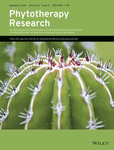
Experimental Study
Two new compounds found in Chrysanthemum indicum flowers have strong antioxidant qualities and are potent in anti-osteoporosis activity.
Luyen BTT, Tai BH, Thao NP, Lee YM, Lee SH, Jang HD, Kim YH
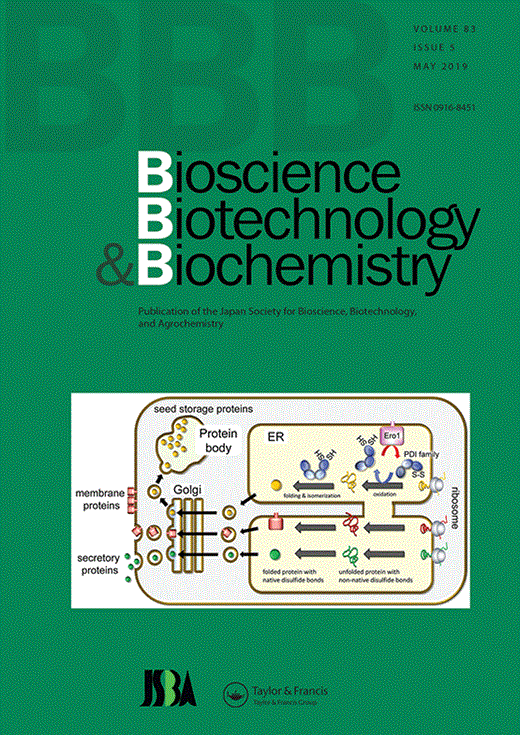
Network Pharmacology
Chrysanthemum flower oil can effectively decrease uric acid levels in rats, by reducing production in the liver and enhancing excretion from the kidney.
Honda S, Kawamoto S, Tanaka H, Kishida H, Kitagawa M, Nakai Y, Abe K, Hirata D

Experimental Study
The extract from Chrysanthemum Indicum Linné effectively reduces inflammation in mouse skin when induced, hinting at potential therapeutic applications for immune-related skin diseases.
Lee DY, Choi G, Yoon T, Cheon MS, Choo BK, Kim HK
Executive Summary
Write an executive summary in the form of a blog article on the topic of "Research into Chinese medicine treatment for Chrysanthemum" summarising the research below and using language that can be easily understood by patients and avoiding medical jargon using a professional and caring tone of voice.
Write an executive summary in the form of a blog article on the topic of "Researched Chinese medicine treatments for Chrysanthemum" summarising the research below in an objective and easy to understand way, and using language that can be easily understood by patients. Group the article into Chinese medicine treatments first, followed by nutrition and other treatments. Avoid using medical jargon and use a professional and caring tone of voice.
Write me a concise but easy to understand executive summary on the topic of "Chinese medicine treatments for Chrysanthemum" based on the following research that I will give you. Your summary should be 2 paragraphs long in Australian English spelling and include references to the studies.
A Data Mining published in 2024 in the journal Traditional Medicine Research found that The traditional Chinese medicine prescription combination of Chrysanthemi Flos, Cassiae Semen, Lycii Fructus, Angelicae Sinensis Radix and Salviae Miltiorrhizae Radix et Rhizoma presents potential for treating retinal diseases. Methodology: The researchers employed data mining to discern a new traditional Chinese medicine (TCM) prescription against retinal diseases and explore its medication rule. This was followed by constructing a network of TCMs, core ingredients, core targets, and core pathways using network pharmacology. The binding ability between core active ingredients and core targets was then verified through molecular docking and molecular dynamics simulation techniques. Discussion: The novel TCM prescription screened in this study bears great potential in retinal diseases treatment through a unique mechanism of action. This mechanism involves TCM prescriptions that possess clearing heat and supplementing activities, associated with liver and lung meridians. The mechanism was found to act by modulating several core targets implicated in multiple core pathways such as the AGE-RAGE signaling pathway in diabetic complications, and the PI3K-Akt signaling pathway, among others. This potentially inhibits the inflammatory response, oxidative stress, and retinal neovascularization and apoptosis of retinal ganglion cells and retinal pigment epithelial cells. This improves retinal structural impairment and can have a significant impact on the treatment of retinal diseases.
A Experimental Study published in 2023 in the journal Journal of Science and Technology - HaUI found that The compound (Z)-5’-Hydroxyjasmone 5’-O-β-D-Glucopyranoside from chrysanthemum flowers demonstrated superior antioxidant and anti-osteoporosis effects. The research involved isolating five compounds from Chrysanthemum indicum L flowers: Syringin, Dihydrosyringin, Benzyl-O-β-D- glucopyranoside, -Phenylethoxy-O--D-glucopyranoside, and (Z)-5’-Hydroxyjasmone 5’-O-β-D-Glucopyranoside. The identification and structure determination of these compounds were performed via the interpretation of their 1D - NMR spectra and comparison to established literature. The collected compounds were then assessed for their antioxidative and anti-osteoporosis activities. During the analysis of results, it was observed that the compound (Z)-5’-Hydroxyjasmone 5’-O-β-D-Glucopyranoside exhibited significantly higher antioxidant activity and anti-osteoporosis effects compared to the others. It showed a strong capacity for peroxyl radical scavenging, surpassing the protection offered by the standard Trolox. Dihydrosyringin also demonstrated a good reducing capacity, as indicated by its CUPRAC values. Furthermore, (Z)-5’-Hydroxyjasmone 5’-O-β-D-Glucopyranoside displayed strong inhibitory effects on osteoclast differentiation, indicating its potential as an anti-osteoporosis agent.
A Animal Study published in 2023 in the journal European Journal of Medicinal Chemistry found that Jin Si Huang Ju tea, a traditional Chinese beverage, contains compounds that potentially reduce lipids, mitigate insulin resistance and reduce liver inflammation in vitro. The researchers identified 14 compounds in the Jinsi Huangju tea using different spectroscopic techniques, 11 of which had not been previously identified in this plant. Two of these compounds, apigenin-7-O-6″-malonylglucoside and luteolin-7-O-6″-malonylglucoside, were synthesized for the first time with a yield of 1.2% over 5 steps. In the findings, the natural compound apigenin-7-O-6″-malonylglucoside was found to inhibit the function of pancreatic lipase, reduce cellular lipid contents, and attenuate insulin resistance when tested in vitro. It was also observed to restore lipid and inflammatory profiles in plasma and the liver, as well as reduce hepatic steatosis in non-alcoholic fatty liver disease (NAFLD) mouse models. Thus, Jinsi Huangju and its active components are strong candidates for the development of drugs or functional foods that could provide a therapeutic strategy for hyperlipidaemia and NAFLD.
A Experimental Study published in 2023 in the journal Egyptian Journal of Chemistry found that Chrysanthemum morifolium contains natural bioactive compounds, including 29 types of phenolics, which display significant antioxidant activity. The study determined the antioxidant properties of Chrysanthemum morifolium by using methanol and ethyl acetate as solvents to extract and then analyse the plant's phenolic profile. The antioxidant activity was assessed with three separate in vitro tests: a reducing power assay, a Phosphomolybdenum antioxidative power assay, and the testing of inhibition of free radical 1,1-di phenyl-2-picryl hydrazyl. The content of total phenolics and total flavonoids was measured using the Folin Ciocalteu reagent, yielding a range of values. In relation to the results, it was established that the examined plant was a significant source of bioactive compounds with notable antioxidant properties. A total of 29 phenolics, divided into 15 phenolic acids and 14 flavonoids were identified and quantified using high-performance liquid chromatography. Ellagic acid was the most present phenolic in the methanol extract and ethyl acetate fraction of green aerial parts. Meanwhile, Hesperidin was the most common flavonoid in the flower methanol extract. The ethyl acetate fraction from the flowers showed the highest efficiency in all tested antioxidant methods, indicating that different parts of the plant can vary in their antioxidant potential.
A Clinical Study published in 2023 in the journal Molecules found that Chrysanthemum extract can be utilised as a natural ingredient to lessen post-meal cholesterol levels and enhance antioxidant status, after eating a high-fat meal. The researchers analyzed the composition of two types of Imperial Chrysanthemum (IC) extracts, specifically IC-P and IC-E, using an Ultra High-Performance Liquid Chromatography-Mass Spectrometry (UHPLC-MS) method. Next, they assessed these extracts' in vitro antioxidant activities using three different radical scavenging assays: 1,1-diphenyl-2-picrylhydraxyl (DPPH), 2,2-azino-bis-3-ethylbenzothiazoline-6-sulfonic acid (ABTS) and Hydroxyl Radical(HR). A group of 37 adults followed a randomized program and were divided into two: one consuming a high-fat (HF) meal alone and the other having the same meal but supplemented with IC extract. Blood samples from participants were taken at a fasting state and several more times up to 8 hours after the meal. The study found 12 compounds, including amino acids, flavonoids, and carboxylic acids, making up over 1% of the IC extracts. Compared to IC-E, IC-P exhibited significantly higher flavonoid content and strong free radical scavenging activity. Chrysanthemum consumption showed significant differences in post-meal glucose levels, triglycerides, total antioxidant capacity (T-AOC), and malondialdehyde (MDA) levels, with the IC-P supplement group showing lower postprandial glucose and improved serum antioxidant status.
A Network Pharmacology published in 2023 in the journal TMR Pharmacology Research found that Chrysanthemum has several active ingredients that can potentially treat dry eye by inhibiting inflammation-related factors and pathways, thus reducing inflammation of lacrimal gland tissue. The study used network pharmacology methods and various databases to further analyze the mechanism of Chrysanthemum in treating dry eye. First, the TCMSP was used to screen for candidate active ingredient molecules of chrysanthemum showcasing requisite oral bioavailability and drug similarity. The active ingredients of chrysanthemum were then identified, followed by target prediction. Cytoscape was used to construct a compound-target network for chrysanthemum. The Online Mendelian Inheritance in Man and DisGeNET databases were utilized to pinpoint pathogenic genes associated with dry eye, and the STRING database produced an interaction network and bar graph to scrutinize protein interactions. Using Venny, a final drug-active ingredient-key target-disease network was created. The study found that Chrysanthemum has eighty active ingredients corresponding to targets for treating dry eye. These key functional targets primarily regulate gene expression, oxidative stress, immune response, apoptosis, proliferation, regulation of cellular inflammation-related factors, and angiogenesis. The primary pathways associated with these key targets include interleukin signaling, metabolism, cytokine signaling in the immune system, immune system, and signal transduction, thereby improving the condition of dry eye primarily through the inhibition of inflammation-related factors.
A Network Pharmacology published in 2022 in the journal Computational and Mathematical Methods in Medicine found that Compound Chrysanthemum extract may alleviate visual fatigue through its interaction with several components, targets, and pathways. Regarding methodology, this study combined network pharmacology with experimental research to uncover the mechanisms by which Compound Chrysanthemum alleviates asthenopia. Firstly, molecular docking analysis was employed to identify a total of 593 essential genes and 39 chemicals present in the compound. This helped ascertain the affinity between key compounds and receptors, PRKACA, PRKCA, PRKCB. This was followed up with molecular dynamic simulations that further evaluated the stability of these receptors and ligands. Concurrently an in vitro examination of the compound's effect on ciliary muscle was conducted, using MTT assay to study different concentrations of the compound's effect on the proliferation of rCSMCs over 24 and 48 hours. The discussion of the results suggests that the extracts had significant impacts in several areas. Among the notable outcomes of the in vitro experiment was an increase in nitric oxide production and a decrease in Ca in ciliary muscle cells. The compound was also found to have a relaxing effect on the isolated gastric smooth muscle of rats by reducing contractile tension. In an in vivo experiment, rats treated with the compound displayed retracted pupils and increased NO content compared to the model group. A considerable contribution to the understanding of the compound's effect was the acknowledgment of its role in modulating the expression of PKA and PKC in the crucial calcium signaling pathway. The coordinated culmination of these findings indicates the compound's multi-faceted approach to alleviating visual fatigue.
A Network Pharmacology published in 2022 in the journal International Journal of Molecular Sciences found that Two varieties of chrysanthemum have similar therapeutic effects but operate through distinct mechanisms, revealing potential for precise applications in both traditional and modern medicine. The study combined network pharmacology, molecular pharmacology, and metabolomics to clarify differences between two herbs, CMF and CIF. An initial analysis was carried out via HPLC-Q-TOF-MS which revealed distinct flavonoid constituents between CMF and CIF. These findings led researchers to make predictions about the possible biological processes responsible for the therapeutic effects of these herbs on LFHSH, including their influence on inflammatory response and fatty acid production. Through a series of ELISA, molecular docking, Western blot, and metabolomics techniques, the research identified similar influences of CMF and CIF on blood pressure and resistance to tissue, organ and functional damage as well as dyslipidemia. Despite the similar outcomes, there was variation in their mechanism of action. Namely, these herbs uniquely influenced inflammatory response, various signaling pathways, lipid anabolism, the renin-angiotensin system, and metabolic abnormalities. Differing effects were believed to be due to each herb's unique regulatory capabilities which, despite the end effect similarities, offer unique pathways for effective medical application.
A Experimental Study published in 2022 in the journal BMC Complementary Medicine and Therapies found that Chrysanthemum extract has protective effects on light-damaged retinas, reducing oxidative stress and improving cellular viability. The experiment incorporated both in-vitro and in-vivo tests. In the lab, ARPE-19 cells were divided into four groups (control, light-damaged, low-dose extract, high-dose extract), treated with varying levels of chrysanthemum extract, and then exposed to light. Cellular viability and reactive oxygen species production were then observed. A similar grouping approach was used with C57BL/6J mice, where chrysanthemum extract concentration was administered before light exposure. The retinas were evaluated for function, morphology, and apoptosis post-exposure. Light-damage caused a decrease in cellular viability and an increase in reactive oxygen species production. However, treatment with chrysanthemum extract showed improvement in viability and reduction in reactive oxygen species. In mice, light damage caused dysfunction in the retinas, destruction of morphology and increased apoptosis, particularly in the retinal pigment epithelium and photoreceptor layer. Again, chrysanthemum extract treatment improved retinal function, maintained retinal structures, and reduced apoptosis. The extract achieved this by increasing concentration of anti-oxidative enzymes.
A Experimental Study published in 2022 in the journal Pak-Euro Journal of Medical and Life Sciences found that Ethanol and n-hexane extracts of Chrysanthemum indicum reveal potent anticancer activity against HepG2 cancer cells by promoting apoptosis and reducing cell proliferation. The research methodology involved extracting compounds from Chrysanthemum indicum using ethanol and n-hexane. These extracts were then applied to HepG2 cancer cells. The study then carefully examined the effect on cell viability and proliferation, as well as indications of apoptosis, in the treated cells compared to untreated control cells. In addition to this, the antioxidative capabilities and antioxidative scavenging activity of the extracts were assessed, particularly focusing on their ability to neutralize nitric oxide, DPHH radicals, H2O2, and superoxide. The results of this process demonstrated that both the ethanol and n-hexane extracts of Chrysanthemum indicum exhibited significant anticancer activity. This was evidenced by a marked decrease in cell viability and proliferation in the treated cancer cells, alongside an increase in indicators of apoptosis. Particularly, the ethanol extract showed more potent anticancer activity and antioxidative capability than the n-hexane extract. The treated cancer cells also showed greater antioxidative scavenging activity, further hinting at the antioxidant potential of these plant extracts.
A Review Article published in 2022 in the journal Pharmacological Research - Modern Chinese Medicine found that The Jing Si Herbal Drink, composed of various antiviral, antioxidant and anti-inflammatory herbs, has been confirmed as potentially effective in treating COVID-19 symptoms. The methodology incorporated in this study involves analyzing the efficacy of the component herbs present in Jing Si Herbal Drink (JSHD). This was done through in vivo and in vitro testing to understand their potential in treating COVID-19. JSHD comprises a combination of 5 antiviral, 7 antioxidant, 7 anti-inflammatory herbs. Furthermore, it includes 2 herbs that inhibit the overactive immune system, one herb that reduces cell apoptosis, and another with antithrombotic ability. These constituent herbs were evaluated for their impact on the pathogenesis of COVID-19. Discussion of the results showed that the ingredients in JSHD have demonstrated potential effectiveness against COVID-19. The active ingredients in the drink were effective in providing symptomatic relief for infected patients. The antiviral, antioxidant, and anti-inflammatory herbs, along with those altering immune response, inhibiting cellular apoptosis and providing antithrombotic capacity, were all found beneficial against the disease. Thus, JSHD holds promise as a useful adjuvant or supplementary treatment in handling COVID-19.
A Randomised Controlled Trial published in 2022 in the journal Functional Foods in Health and Disease found that A daily dose of Chrysanthemum flower extract was found to significantly reduce serum uric acid levels, potentially improving hyperuricemia. In the methodology, two studies were conducted where 44 healthy Japanese men and women with slightly elevated serum uric acid levels were split into two groups, active and placebo, using a randomized computerized system. The active group received 100mg of Chrysanthemum flower extract containing 1mg of luteolin. In the first study, purine naturally found in food was ingested alongside the flower extract, and the participants' serum uric acid levels were measured over time. In the second study, the extract or a placebo was taken daily over 12 weeks. Changes in uric acid levels were the primary outcome, and blood, urine, and body parameters were checked to confirm the safety of the extract. For the results, in the first study, there were no significant differences found in serum uric acid levels between the group that consumed the extract and the placebo group following a purine-rich meal. However, in the second study spanning 12 weeks, the group that took the Chrysanthemum flower extract had significantly lower uric acid levels than the placebo group. Safety tests showed no adverse effects from taking the extract.
A Review Article published in 2022 in the journal Reference Series in Phytochemistry found that The flower of Chrysanthemum morifolium, widespread in Asia, has been discovered as a treatment for diverse diseases, including obesity, heart disease, and cancer, due to its beneficial phytoconstituents. Methodology: A comprehensive examination of Chrysanthemum morifolium was conducted to shed light on its medicinal uses and health benefits. The studies focused on its use in traditional medicine, which includes treatment for excessive internal heat, eye inflammation, fever, migraines, and hypertension. The biological properties of the flower, such as flavonoids, polyphenols, volatile oils, terpenoids, and polysaccharides were analyzed, and their antioxidant, anti-inflammatory, anti-obesity, cardioprotective, neuroprotective, anticancer, and antidiabetic effects taken into account. Discussion of results: The examination of Chrysanthemum morifolium validated the flower's antioxidant, anti-inflammatory, and anticancer properties, among others. It also indicated potential applications in preventing and treating obesity, cardiovascular diseases, neurodegenerative diseases, and diabetes. Moreover, its medicinal efficacy and safety in treating health conditions were backed by clinical studies.
A Review Article published in 2022 in the journal South African Journal of Botany found that Chrysanthemums, popular floricultural crops, not only hold significant ornamental value but also exhibit various therapeutic potentials including antioxidant, antimicrobial, and anticancer activities. The method involved in this research aimed at studying the genus Chrysanthemum through a decade-long review (2010-2020) of scientific evidence, focusing on its therapeutic potential, phytochemistry, and pharmacological activities. Various phytochemical compounds including flavonoids, terpenoids, polysaccharides, and unsaturated fatty acids, which are present in the genus Chrysanthemum, were identified. In addition, the taxonomy, distribution, horticultural, and traditional uses of the genus were also studied. The results demonstrated that Chrysanthemum species show numerous potential medicinal benefits, ranging from antioxidant to antimicrobial, anti-inflammatory, anticancer, anti-allergic, anti-obesity, immune regulation, hepatoprotective and nephroprotective activities. The research also underlined the opportunity of medicinal exploitation of the genus Chrysanthemum, given the extreme popularity of these plants and the wide range of phytochemical compounds they contain. The ornamental, medicinal, environmental, and industrial values of these plants further establish them as leading floricultural crops.
A Network Pharmacology published in 2021 in the journal Plants found that A combination of extracts from chrysanthemum were found to be more effective in treating hyperuricemia and potentially developing anti-hyperuricemic functional foods. The methodology used in this study involved treating human liver cancer cells, mouse renal proximal tubule cells and hyperuricemic mice with uric acid extracted from two different plants, specifically L. (Ci) and Siebold and Zucc. (Co). It was found that the extracts from these two plants, both individually and in combination, suppressed the activity of certain enzymes involved in uric acid metabolism and influenced the expression of corresponding proteins. In discussing the results, the study identified that the combined effect of these two extracts was significantly stronger in suppressing uric acid accumulation compared to using each extract on its own. This was evidenced by an increased excretion of waste products associated with uric acid metabolism when using the combination of Ci and Co. There was also a decrease in the expression of certain proteins that facilitate uric acid accumulation. Therefore, the data suggests that a mixture of Ci and Co extracts could be effective in developing functional foods to combat hyperuricemia.
A Experimental Study published in 2021 in the journal Chemistry & Biodiversity found that Chrysanthemum, a traditional Chinese medicine, shows significant antioxidant activity and hepatoprotective effects, making it a potential resource for functional foods and medicinal materials. A comprehensive evaluation of 25 common chrysanthemum varieties in China was carried out for their chemical constituents, antioxidant activity, and hepatoprotective effects. Initially, the water extracts from chrysanthemums were analysed using liquid chromatography-mass spectrometry and 29 chemical components were identified. It was observed that chrysanthemums were rich in chemical constituents with significant differences in the contents of phenolic acids and flavonoids among the varieties. Afterwards, the antioxidant activities of different chrysanthemums were investigated through different assays. The relationships between nine main components and antioxidant activities were examined to identify the antioxidant constitutes in chrysanthemums. The study also examined the capacity for each cultivar to protect against cell damage, with certain cultivars standing out with higher efficacy. The hepatoprotective effects of eight mainstream varieties were determined using a model of acute alcoholic liver injury. The chrysanthemums were found to protect the liver from injury by impacting relevant liver function and antioxidant indexes. Selected varieties could decrease certain liver activities, while others significantly decreased harmful content in liver tissue, showing significant antioxidant capacity.
A Experimental Study published in 2020 in the journal Evidence-Based Complementary and Alternative Medicine found that Chrysanthemum coronarium L. extract can both stimulate bone building cells and inhibit bone breaking cells, so has potential as a natural treatment for osteoporosis. The study examined the effects of Chrysanthemum coronarium L. extracts on in vitro cell cultures and animal models with bone loss. This was done by observing the increase and decrease of bone formation markers in different cell lines, specifically the murine preosteoblastic cell line MC3T3-E1, and the murine macrophage-like cell line RAW264.7 respectively. The results showed that the extract stimulated the differentiation of osteoblasts, cells responsible for bone formation, and inhibited osteoclast differentiation, cells that break down bone. In osteoporotic animal models, the extract prevented bone loss, preserved the structure of the small bones and improved serum bone turnover markers. This implies that the extract has promising potential as a natural therapy for osteoporotic bone loss.
A Review Article published in 2020 in the journal Journal of Ethnopharmacology found that Juhua, the flower head of Chrysanthemum morifolium Ramat, possesses multiple medicinal properties and has a significant role in dietary herbal medicine in China. The study gathers information about Chinese dietary herbal medicine and flower-derived medicine, focusing on Juhua, from varied sources such as government reports, classic books of Traditional Chinese medicine, doctoral and master's theses, and various databases. The methodology includes summarizing all flower-originated crude medicines listed in Chinese pharmacopeia and their applications for the first time, retracing the edible history and development of flowers in China, discussing the theory of Chinese dietary herbal medicines, and examining flowers as dietary herbal medicines. Discussion of the results highlights applications in Traditional Chinese medicine and diet, cultivars, phytochemistry, quality control, and pharmacology of Juhua. A safety evaluation of Juhua, along with an overview of chrysanthemum breeding and biotechnology, are included in the findings. The study determines that many herbal flowers, particularly Juhua, have considerably contributed to the prevention and treatment of various diseases in China.
A Randomised Controlled Trial published in 2020 in the journal The American Journal of Clinical Nutrition found that A botanical formula of lutein ester, zeaxanthin, and extracts from blackcurrant, chrysanthemum, and goji berry can effectively lessen eye fatigue and improve macular function. Research methodology involved the distribution of 360 randomly selected participants into four groups where they received placebos and three varied doses of a botanical formula. This formula, given in chewable tablets comprised of 6 mg, 10 mg, or 14 mg of lutein. Each participant was administered these once daily over a period of 90 days, and had three check-ins at the beginning, at day 45, and finally on day 90 of the study. The results of the study indicated that the botanical formula effectively improved the individual scores of participants on eye fatigue symptoms like eye soreness, blurred vision, dry eyes, foreign body sensation, and tearing. Using the formula resulted in a notable decrease in the total score of eye fatigue symptoms at both the 45-day and 90-day intervals as compared to the placebo while also significantly improving visuognosis persistence time. Tear secretion improvement was observed in the groups having 10mg and 14mg lutein formula, supported by the Schirmer test. Furthermore, the results showed an increase in macular pigment optical density with all three doses of the formula, but no significant alterations were observed in the retinal thickness and retinal volume among all the groups at both check-ins.
A Network Pharmacology published in 2020 in the journal BMC Complementary Medicine and Therapies found that Chrysanthemum morifolium Ramat. ethanol extract (CEE) presents a potential protective effect on lipopolysaccharide induced acute lung injury in mice. Ninety male mice were randomly split into five groups and orally treated for seven days with control, model, and varying doses of CEE. On the last day of administration, all mice except the control group were infected intratracheally with lipopolysaccharide to induce acute lung injury. The experiment then measured factors such as lung histopathology, lung wet/dry weight, white blood cell count, and various immunity-related substances in the lung tissue. The results revealed that CEE could improve lung damage as evident in histopathology, reduce ratio of lung wet to dry weight and other indices, and hinder the increase in white blood cells, lymphocytes, and neutrophils. It also reduced pro-inflammatory markers while increasing anti-inflammatory cytokines and substances related to antioxidant activity. The effects of CEE were seen to be dose-dependent, suggesting that larger doses provided more benefit.
A Experimental Study published in 2020 in the journal Artificial Cells, Nanomedicine, and Biotechnology found that Chrysanthemum morifolium, Naringenin and Apigenin can alleviate depression-like behavior by interfering with specific metabolic pathways. In this study, the researchers decided to evaluate the impact of Chrysanthemum morifolium, Naringenin, and Apigenin on depression-like behaviors instigated specifically by corticosterone. These substances, which are the primary active ingredients in the aqueous extract of C. morifolium and are used in Traditional Chinese Medicine, were analyzed regarding their therapeutic properties for depression. Researchers analyzed behavior and biochemical indicators tied to depression to understand the effects of these substances on a modeled depression scenario. In the discussion of results, the authors highlight that these substances demonstrated antidepressant properties through their interference with certain metabolic pathways. These pathways include tryptophan metabolism, arginine and proline metabolism, citrate cycle, niacin and niacinamide metabolism, phenylalanine metabolism, and alanine, aspartate and glutamate metabolism. The effects were further explained on the basis of material and energy metabolism. Moreover, it was noted that Naringenin could potentially be used as a replacement for Chrysanthemum morifolium with similar beneficial outcomes; while Apigenin paralleled the function of other positive drugs targeting depression.
A Review Article published in 2020 in the journal The American Journal of Chinese Medicine found that The Chrysanthemum indicum L. plant has been discovered to have multiple pharmacological capabilities including anti-inflammatory, antioxidation, antipathogenic, anticancer, immune regulation, and hepatoprotective effects. In their study, the researchers undertook an extensive review of Chrysanthemum indicum L., a longstanding staple of traditional Chinese medicine. They examined the botany, phytochemistry, and pharmacology of the plant, integrating historical records relating to traditional medicinal usage with modern scientific analyses. In the discussion of their findings, they made note of the plant's impressive pharmacological portfolio. More than 190 chemical compounds have been identified within the plant, including flavonoids, terpenoids, phenylpropanoids, and phenolic acids. These contribute to a variety of medical benefits - illustratively, its extracts show anti-inflammatory and anti-oxidation properties, and compounds isolated from the plant suggest potential anticancer, antipathogenic microorganism, immune regulation, and hepatoprotective effects.
A Review Article published in 2019 in the journal Applied Ecology and Environmental Research found that Chrysanthemum, rich in unique chemical compounds, offers significant health benefits such as stress relief, cardio protection, immunity boost, improved eye health, and osteoporosis risk reduction. The study primarily focuses on evaluating the most important chemical extracts of chrysanthemum. These include flavonoids, betaine, choline, and vitamin B1. Further, the researchers identified thirteen compounds unique to chrysanthemum flowers. These were extracted and analyzed to unveil their potential health benefits. In the discussion of results, the authors highlight chrysanthemum's impressive range of health benefits stemming from its chemical composition. It is revealed that chrysanthemum can potentially alleviate stress and anxiety while improving cardiovascular health. It also has properties to guard against oxidative damage and inflammation, support a healthy immune function, enhance eye health, and lessen the risk of osteoporosis. Interestingly, the herb's beneficial traits align with its traditional use in Chinese medicine, underscoring chrysanthemum's potential in promoting holistic, organic health.
A Network Pharmacology published in 2019 in the journal Molecules found that The purple chrysanthemum tea, imbued with unique antioxidants and affected by infusion time, showed comparatively higher antioxidant activity than the yellow chrysanthemum. Methodologically, the researchers used a variety of testing methods to analyze the phytochemical composition and antioxidant activity of the γ-irradiated mutant chrysanthemum cultivar with dark purple petals (ARTI-Dark Chocolate) and the conventional yellow variety (Gamguk). The influence of different water temperatures and infusion time on the content and activity was also investigated. In addition, the floral scent of both tea types were investigated using spectrometry. Discussion of the results indicates that the phytochemical profiles of both the yellow and purple chrysanthemum teas varied significantly. Purple chrysanthemum tea contained anthocyanins and linarin, which were not present in the yellow variety, and had higher levels of certain compounds. The infusion time and temperature also impacted the purple variety more than the yellow, with the highest total compound content appearing at 100 °C after 4 minutes of infusion. In the antioxidant tests, the purple chrysanthemum tea demonstrated superior antioxidant activity, which was attributed to its high anthocyanin content. In all infusing conditions, both teas presented strong radical scavenging effects.
A Theoretical Article published in 2019 in the journal Applied Ecology and Environmental Research found that Chrysanthemum, a plant primarily grown in China and Japan, offers significant health benefits including stress reduction, cardiovascular improvement, and lowering osteoporosis risk. The study focused on Chrysanthemum, a notable plant in the ornamental industry and traditional Chinese medicine, mainly grown in China and Japan. The researchers identified its crucial chemical extracts such as flavonoids, betaine, choline, and vitamin B1. They additionally pinpointed thirteen significant compounds of chrysanthemum flowers, including acacetin-7-0-beta- D-glucopyranoside, luteolin, acaciin, and boscialin, among others. The findings revealed that chrysanthemum tea exhibits considerable health advantages. It eases stress and anxiety, enhances cardiovascular health, protects against oxidative damage, inhibits inflammation, supports healthy immune function, ameliorates eye health, and decreases the risk for osteoporosis. In traditional Chinese medicine, chrysanthemum is considered a cold herb that dispels pathogenic heat, aids the liver, improves eyesight, and promotes detoxification. The study, therefore, endorsed the treatment with natural Chinese herbal medicine, especially chrysanthemum, over synthetic drugs for a more organic life.
A Network Pharmacology published in 2017 in the journal Evidence-Based Complementary and Alternative Medicine found that A mixture of Chrysanthemum indicum Linne flower and Cinnamomum cassia significantly mitigates hyperuricemia in rats by inhibiting xanthine oxidase activity and enhancing uric acid excretion. In this experiment, the authors evaluated the impact of a combined extract from Chrysanthemum indicum Linne flower (CF) and Cinnamomum cassia (CB) on hyperuricemia, a condition associated with excessive uric acid in the bloodstream. The study was conducted on both normal and hyperuricemic rats induced by potassium oxonate. Uric acid levels and renal excretion were primarily measured to analyse the potential antihyperuricemic properties of the CF and CB mix. From the experiment, it was found that the CF and CB blend led to a significant reduction in uric acid levels in both normal and hyperuricemic rats, with the effect being stronger compared to either CF or CB in isolation. Additionally, the mixture caused an increase in uric acid elimination through the kidneys in the hyperuricemic rats, pointing to its potential antihyperuricemic action. It was also discovered that the mixture and its primary components, namely, chlorogenic acid, isochlorogenic acid, coumarin, cinnamaldehyde, trans-cinnamic acid, and o-methoxycinnamaldehyde, mitigated the action of xanthine oxidase (an enzyme that accelerates uric acid production) in vitro. This partial xanthine oxidase inhibition sheds light on the underlying mechanism of the antihyperuricemic effect by the CF and CB mixture.
A Randomised Controlled Trial published in 2017 in the journal Integrative Molecular Medicine found that Luteolin, found in chrysanthemum flower extract, can potentially reduce serum uric acid levels, suggesting it may help prevent gout. The research involved two double-blind placebo-controlled studies examining the impacts of chrysanthemum flower extract enriched with luteolin on serum uric acid levels. In a single-dose study, fasting participants consumed a capsule loaded with the luteolin-rich extract before partaking in a high purine meal, with uric acid levels evaluated over time. The second study involved repeated consumption of the capsule over a 4-week period, with fasting serum uric acid measured before and after consumption. The research found that although luteolin did not significantly affect uric acid levels immediately after consumption, there was an observed decrease in these levels following four weeks of continued ingestion. Most notably, subjects with a baseline uric acid level between 5.5 to 7.0 mg/dL saw a significant reduction after they consumed chrysanthemum flower extract. The trial also established that no adverse effects resulted from the ingestion of the extract.
A Review Article published in 2016 in the journal Biosciences Biotechnology Research Asia found that The bioactive compounds in Chrysanthemums can be used to develop next generation, multi-functional drugs for various diseases including diabetes and prostate cancer. The methodology comprised a detailed literature review to understand the organic components found in dried Chrysanthemum flowers, such as alkanes, flavonoids, terpinoids, unsaturated fatty acids, and polysaccharides. These components are classified as secondary constituents within Phytochemicals. The study then focused on understanding the bioactive compounds in the Chrysanthemums, to explore their potential use in novel drug development processes. The results showed that the Chrysanthemum plant, due to its antifungal, antibacterial and anti-inflammation activities, holds great promise for biomolecules research. It was found that the phytochemical properties of Chrysanthemums can serve as the foundation for the production of non-toxic and eco-friendly drugs. This implies that these plants could play a crucial role in addressing global health concerns, such as diabetes and prostate cancer, in the future.
A Experimental Study published in 2016 in the journal Evidence-Based Complementary and Alternative Medicine found that The ethanol extract of FCI potentially counters bone loss in mice by enhancing osteoblast proliferation and differentiation, facilitated by multiple bioactive compounds. In this study, the researchers scrutinized the antiosteoporosis potential of the ethanol extract of FCI in mice experiencing bone loss due to ovariectomy, a process likened to human menopause. In the process, the antiosteoporosis fraction derived from FCI was isolated and cleansed using a technique known as high-speed countercurrent chromatography, which resulted in the successful isolation of the principle bioactive compounds. The researchers found that, among the separations, the ethyl acetate fraction exhibited remarkable antiosteoporosis activity. Upon further analysis, the foremost compounds were identified as acacetin, apigenin, luteolin, and linarin. Furthermore, these compounds were found to stimulate the proliferation and differentiation of osteoblasts - the cells responsible for bone formation. The process was potentially mediated by the activation of the AKT signaling pathway and the upregulation of certain genes such as Runx2, OCN, OPN, and COL I. The collective efforts of these bioactive compounds played a crucial role in the observed antiosteoporosis effects, suggesting that the effectiveness of FCI is not reliant on a single component, but an ensemble of elements working in tandem.
A Randomised Controlled Trial published in 2015 in the journal Nutrafoods found that Chrysanthemum flower oil significantly reduces diet-induced elevation of serum uric acid in Japanese males with high baseline levels. In the study, a randomised, double-blind, cross-over comparison method was employed. Twenty male individuals from Japan were selected and segregated into two groups, one of which received the chrysanthemum flower oil, while the other group was given a placebo. Blood and urine samples were systematically collected from these individuals and meticulously analyzed with a focus on levels of serum uric acid. The analysis of these samples divulged some noteworthy findings. There was no observed suppression of the diet-induced serum uric acid elevation in those subjects whose baseline serum uric acid values ranged betwixt 5.5 and 8.0 mg/dl when given the chrysanthemum flower oil. However, for those subjects with a baseline serum uric acid level of 7.1 mg/dl or greater, the application of this oil significantly reduced this elevation. Based on these findings, it was concluded that chrysanthemum flower oil indeed has an effective role in reducing uric acid elevation, specifically for Japanese male subjects belonging to the higher baseline bracket.
A Experimental Study published in 2015 in the journal Phytotherapy Research found that Two new compounds found in Chrysanthemum indicum flowers have strong antioxidant qualities and are potent in anti-osteoporosis activity. The research involved the isolation of two new compounds from Chrysanthemum indicum flowers, alongside 17 known compounds. Each compound was then measured for total phenolic and flavonoid content. The research demonstrated the highest concentration of these beneficial compounds within the Ethyl Acetate (EtOAc) fraction of the sample. An assessment of the antioxidative potential of each compound was conducted next, mainly focusing on their peroxyl radical-scavenging capacity and their ability to reduce copper ions. The results confirmed that the two new compounds discovered displayed strong antioxidative effects. These compounds also showed promising activity against tartrate-resistant acid phosphatase in receptor activator of the nuclear factor in osteoclastic cells, suggesting potential efficacy as agents in combatting osteoporosis. Beyond these new compounds, several other compounds isolated from the Chrysanthemum indicum also demonstrated strong antioxidative and anti-osteoporotic activity.
A Network Pharmacology published in 2014 in the journal Bioscience, Biotechnology, and Biochemistry found that Chrysanthemum flower oil can effectively decrease uric acid levels in rats, by reducing production in the liver and enhancing excretion from the kidney. In this study, the researchers developed a hyperuricemia model by feeding rats a specific chrysanthemum flower oil enriched diet. Hyperuricemia is a condition of elevated uric acid levels which the team sought to decrease. Chrysanthemum flower oil was chosen due to its polyphenol content, substances known to have positive health benefits. By administering this oil orally to rats on this diet, they were able to monitor its impact on the rats' serum uric acid levels. The results showed that the chrysanthemum oil had a significant impact on controlling and reducing uric acid levels. This was achieved through two primary mechanisms. Firstly, there was a demonstrated inhibition of xanthine oxidase activities in the liver. This enzyme plays a crucial role in the conversion process that leads to the creation of uric acid. Secondly, the oil increased uric acid levels in the urine, suggesting greater excretion of it. This was further confirmed by the up-regulation of uric acid transporter genes in the rats' kidneys, which enhances the excretion process.
A Experimental Study published in 2009 in the journal Journal of Ethnopharmacology found that The extract from Chrysanthemum Indicum Linné effectively reduces inflammation in mouse skin when induced, hinting at potential therapeutic applications for immune-related skin diseases. To investigate the effects of Chrysanthemum Indicum Linné extract (CIE) on skin inflammation, the study first prepared a 70% ethanolic extract of the plant. The investigation was conducted in vivo using mice. Researchers then measured the production of pro-inflammatory cytokines, the activation of myeloperoxidase, and conducted histological assessments. They induced acute and chronic skin inflammation in the mice using 12-O-tetradecanoyl-phorbol-13-acetate, a substance known to cause mouse ear edema. In understanding the results, they found that administering CIE inhibited topical edema in the mouse's ear, following administration at a dose of 200mg/kg. This resulted in significant reductions in skin thickness, tissue weight, inflammatory cytokine production, and neutrophil-mediated myeloperoxidase activity. The extract was also found to be effective at reducing various histopathological indicators, as well as inflammatory damage induced by chronic exposure to the inflammation-inducing substance. The study, therefore, concludes that CIE could be an effective anti-inflammatory agent and may have therapeutic potential for various immunity-related skin diseases.
Moderation Tools
Topic
Sign In
Users not signed in are limited to viewing the 5 most recent items of content.
"Over 176 compounds, including 60 flavonoids, 28 phenylpropanoids, 68 triterpenoids, 3 steroids, and 17 others, were isolated and identified in Juhua." — 29 Sep 2021